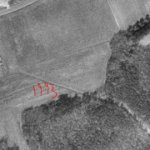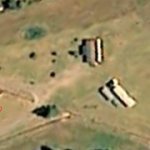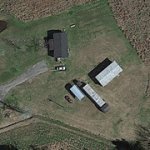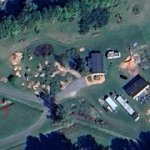Shaft
Active member
You know how I'm always complaining about my land being a swamp, how it doesn't drain, how it is surrounded by flood areas, etc?
Did a little digging into local history. Apparently my land is right in the center of a federal case in the 60s or 70s called the Chicod Creek Watershed case. Kind of interesting.
Anyway, here's some stuff I've found, and photos from as far back as 1993. Looking for more stuff from earlier, land surveys or anything like that.
==========================
= History of Farm & Area =
==========================
I am in a "Upstream basin."
The "canal" behind my house is a "downstream flowline" connecting to the "upstream flowline" of what appears to be Chicod Creek; must be a minor tributary. Would like to know its name though
Natural & Beneficial Functions of Floodplains
In addition to the natural beauty of our rivers and wetlands these, features dissipate wave forces, reduce frequency and duration of surface flow, provide habitat for fish, wildlife, and other vegetation, and filter various forms of runoff. Fortunately, the State of North Carolina has implemented Buffer Rules to protect the areas immediately adjacent to our water bodies from undesirable development that could be detrimental to their functions. For further information on these Buffer Rules, please contact NCDENR at 919-733-7984.
The dominant source of flooding in Pitt County is riverine flooding.
Riverine flooding from heavy rainfall occurs on the:
- Chicod Creek
- Clayroot Swamp
- Cow Swamp
- Juniper Branch
- Swift Creek
- Tar River
- Tranters Creek
- Island Swamp (39 feet; appears to be on the south east near Wilmar; rises in E Pitt County and flows NE into Chicod Creek.) [Near Tuffy Hodges Road to my South East, flows north into Chicod Creek]
- Chicod Creek [Famous Court case; main watershed of my area; … rises in W Beaufort County and flows NW into Pitt County, where it enters Tar River. Appears as Cheecods Creek on the Collet map, 1770.; East Branch formed in W - Beaufort County by the junction of Juniper and Harding Swamps. Flows NW into Pitt County, where it enters Chicod Creek. AKA Cheecods Creek, Chicot Creek, East Branch Chicod Creek, and East Branch Chicot Creek. ]
- Grimes Millpond [E Pitt County, drains into Chicod Creek; near the cow farms on S Grimesland Bridge Rd]
- Bear Creek [rises in E Pitt County and flows E into Tar River. Appears on the Collet map, 1770.]
- Cow Swamp [Tributary of Chicod Creek; 13 ft above sea level; rises in S Pitt County and flows NE into Chicod Creek; this is near Madison's House]
- Cross Swamp [South west of me on Sis Mills Rd and connects to Cow Swamp]
- Thorofare Swamp [10 meters or 30 feet; near Wilmar; rises in E Pitt County and flows SE into Clayroot Swamp.]
- Clayroot Swamp [rises in SE Pitt County and flows SW and SE into Swift Creek. For a part of its course, it forms the boundary between Craven and Pitt Counties.]
LIFELONG residents of Pitt and Beaufort Counties in North Carolina recall how as children they fished and swam in Chicod Creek, a low-gradient stream typical of the state's Coastal Plain. The creek and its two main tributaries, Cow Swamp and Juniper Branch, drain about 35,000 acres of farmland and forest.
At one time Chicod Creek had a reasonably well-defined channel. However, logging in the early 1900s left debris in the creek and an adjoining swamp. Storm-toppled trees added to the blockage, and subsequent sediment accumulations from agricultural land and unpaved road runoff choked the stream's channel.
By the 1940s, flooding in the watershed caused severe crop losses. At least half the watershed's 10,000 acres of cropland suffered damage on the average of once every five years. Floodwater from Chicod Creek also blocked public roads periodically. An average of three flood-producing storms occurred annually in the watershed, with major floods plaguing the area in 1947 and again in 1955 (5).
A plan takes shape
In 1963, farmers in the Chicod Creek watershed requested help from the U.S. Department of Agriculture to solve their flooding and drainage problems.
The topography of the watershed is nearly level to gently sloping. The outer perimeter is flat and well drained and the flood plains are broad swamps. Land use in the watershed consists of 15,600 acres of cropland; 15,550 acres of woodland; 350 acres of grassland; and 3,600 acres of miscellaneous uses. Approximately 10,000 acres of crop and pasture land are subject to flooding. Swamp hardwoods cover 3,200 acres of the watershed. A loss of at least 50 percent is sustained on the crops grown on land subject to flooding about one each five years. Several county roads are blocked by high water on an average of one or more times a year. This causes interrupted traffic, blocked school bus and mail delivery routes, interrupted feeding schedules of farm animals, and additional maintenance and repair on the roads. Excessive rainfall and flooding create a health hazard. Septic tanks, nitrification lines, and approved pit-privies overflow to the surface of the soil after excessive rainfall. Poor drainage often results in low quality crops and high unit cost of production.
The population of the watershed is approximately 3,000 people. The entire population is classified as rural with 25 percent being non-farm. Agriculture is the principle enterprise in the watershed. The chief cash crops are tobacco, corn, soybeans, and cotton. Livestock production, consisting of beef cattle and swine make up ten percent of the cash farm receipts. Value of farm products sold was under $10,000 for 77.6 percent of the 250 farms in the watershed. Fifty-five *362 percent of the families make less than $3,000 income per year.
Chicod Creek originates about 6 miles south of Grimesland and flows generally north to its confluence with the Tar River. Cow Swamp and Juniper Branch are the two largest tributaries and they enter Chicod Creek from the west. Chicod Creek and the surrounding area has significant value for numerous waterfowl, fur bearers and other wetland wildlife species. The streams have substantial resident fish population and supports a significant spawning run of herring during the spring.
Wetlands occur in a variety of locations across the state. The majority of wetlands in North Carolina are in the Coastal Plain, which occupies the eastern third of the state. The Coastal Plain is closer to sea level and flatter than the middle and western parts of North Carolina. In the Coastal Plain, wetlands can be found in small depressions, in swales (low lying areas between sand dunes or ridges), along streams and rivers, and next to the sounds and the ocean. These coastal plain wetlands are located in areas that can be influenced by saltwater and wind and lunar tides.
Pitt County
Pitt was formed in 1760 from Beaufort. The act was to become effective January 1, 1761. It was named in honor of William Pitt. It is in the eastern section of the State and is bounded by Beaufort, Craven, Lenoir, Greene, Wilson, Edgecombe, and Martin counties. The present area is 656 square miles and the population is 61,244. The act establishing the county authorized the courts to be held at the home of John Hardy until a courthouse could be built. It also directed the justices to contract for the construction of the courthouse, prison, and stocks on John Hardy’s land on the south side of Tar River, near the Chapel known as Hardy’s Chapel.
In 1771 Martinsboro was established on Richard Evans’s land, and in 1774 the courthouse, prison, and stocks were moved to Martinsboro. Court was held at the home of John Lessley until the new courthouse, prison and stocks were completed. In 1787 Martinsborough was changed to Greenesville. Greenville is the county seat. 712
. . . , That from and after the First Day of January next, the upper Part of the said County of Beaufort, beginning at the Line between the said County and Tyrrel, running South, South West to Cherry’s Run, where the main Road crosses the said Run; thence down the said Run to Tranter’s Creek; thence down the said Creek to Pamlico River; thence down the said River to the Fork Point, on the South side of the said River; thence up the Chocowinity Bay and Creek to the Head thereof; thence South. South West to the dividing Line of the said County and Craven; thence along the dividing Lines of Craven, Dobbs, Edgecomb, and Tyrrel; so that all that Part of Beaufort County to the Westward of Cherry Run, Chocowinity Bay and Creek, shall, and is hereby declared to be a separate County and Parish, and shall be called and known by the name of Pitt County, and St. Michael’s Parish; . . ,713
The dividing line between Pitt and Dobbs was authorized to be established in 1764.
. . . the said dividing Line between the Counties of Dobbs and Pitt; from Blount’s Ford on Little Contentney Creek, to Luke White’s, then up the middle Swamp to William Wilson’s, and from thence to the nearest part of Edgecomb County; which said Lines, when run by the Commissioners aforesaid, or any two of them, shall be by them entered on Record in the Courts of Each of the said Counties of Dobbs and Pitt, and shall thereafter be deemed and taken to be the dividing lines between the said Counties. 714
In 1784 the line between Martin, Edgecombe and Pitt was authorized to be run with the following description:
. . . , commissioners, or a majority of them, be and they are hereby authorized and empowered as soon as may be after the passing of this Act to extend the dividing line between the counties aforesaid, beginning in the old line that formerly divided Edgecombe and Halifax at or near Benjamin Cotton’s running thence a direct course to the line that divides Martin and Pitt counties at or near Charles Council’s. 715
Part of Pitt was annexed to Beaufort in 1785.
… all that part of the county of Pitt included in the following bounds, beginning at Craven county line where it crosses Creeping Swamp, and running with Creeping Swamp and Checod Swamp to the mouth of Round Island branch, then a direct course to the mouth of Pitch Hole branch, then with the swamp to Bear creek, then down Bear creek to Tar river, then down the river on the north side to the mouth of Tranter’s creek, then up said Creek to Martin county line, then with Martin, Beaufort and Craven lines to the beginning, be and the same is hereby annexed to and shall be and remain a part of the county of Beaufort. 716
Part of Craven was annexed to Pitt in 1787.
… all that part of the county of Craven, included in the following bounds, beginning at the Pitt line where creeping Swamp intersects the same; thence down the run or middle of the said swamp to the run or middle of the Clay-root Swamp, thence down the run of the said Clay-root Swamp to the run of Swift’s Creek Swamp, thence up the run of the same to Isaac Gardener’s Ford, or part across the same, thence a direct line to the lower landing on Grindal Creek, which is in about half a mile of the said creek, thence down the said Grindal Creek to the river Neuse, then up the meanders of the said river Neuse to the mouth of Great Contentney Creek, thence up the said creek to the mouth of Little Contentney Creek, then up the same to the line of the county of Pitt, be, and the same is hereby annexed to, and shall be and remain a part of the county of Pitt; . . ,717
Part of Pitt was annexed to Edgecombe in 1801.
… all that part of Pitt county, bounded as follows, shall be added to the county of Edgecomb: Beginning where Edgecomb county-line crosses Coneto Creek, near Samuel Crisp’s; then down said creek to Christopher Harrod’s plantation; then nearly West to Edgecombe county-line, so as to include James Summerlin; and all that part North of said line shall hereafter be part of the county of Edgecomb.718
Part of Pitt County was annexed to the county of Martin in 1805.
… all that part of Pitt county bounded as follows, shall be annexed to the county of Martin, viz. Beginning where the present county line intersects the fork of Trentross creek and Flat Swamp to where the present county line crosseth said swamp; and all that part of Pitt county lying north of the before recited boundaries shall hereafter be part of Martin county. . . .719
In 1818 an act was passed authorizing the boundary line between Pitt and Craven to be run and marked as the boundary line was not properly known. No description is given in the law.720
The dividing line between Pitt and Greene counties was authorized to be changed in 1895.
. . . beginning in the old county line of Green and Pitt, in the mouth of Middle swamp, then down the various courses of Sandy run to little Contentnea creek; then down the said little Contentnea creek to the old line: . . .721
INFLUENTIAL FIGURES IN PITT COUNTY HISTORY
- William Pitt
- John Hardy [courts held at his home til a courthouse was built; his land was used for the construction of the courthouse, prison and stocks on the south side of the Tar River near Hardy's Chapel in 1761]
- Richard Evans [Martinsboro was established on his land in 1771; in 1774 the courthouse, prison and stocks were moved to Martinsboro]
- John Lessley [used his home for court until new digs were completed; in 1787 Martinsboro became Greenesville]
Click for original

Click for original

Click for original

Click for original

Click for original

Click for original

Click for original

Click for original

[video=youtube]
[video=youtube]
[video=youtube]
Basically the environmentalists won, preventing the county from relieving the sediment and/or logging debris that are clogging up our waterways (therefore causing flooding and massive amounts of crop damage, property damage and loss to human life).
Did a little digging into local history. Apparently my land is right in the center of a federal case in the 60s or 70s called the Chicod Creek Watershed case. Kind of interesting.
Anyway, here's some stuff I've found, and photos from as far back as 1993. Looking for more stuff from earlier, land surveys or anything like that.
==========================
= History of Farm & Area =
==========================
I am in a "Upstream basin."
The "canal" behind my house is a "downstream flowline" connecting to the "upstream flowline" of what appears to be Chicod Creek; must be a minor tributary. Would like to know its name though
Natural & Beneficial Functions of Floodplains
In addition to the natural beauty of our rivers and wetlands these, features dissipate wave forces, reduce frequency and duration of surface flow, provide habitat for fish, wildlife, and other vegetation, and filter various forms of runoff. Fortunately, the State of North Carolina has implemented Buffer Rules to protect the areas immediately adjacent to our water bodies from undesirable development that could be detrimental to their functions. For further information on these Buffer Rules, please contact NCDENR at 919-733-7984.
The dominant source of flooding in Pitt County is riverine flooding.
Riverine flooding from heavy rainfall occurs on the:
- Chicod Creek
- Clayroot Swamp
- Cow Swamp
- Juniper Branch
- Swift Creek
- Tar River
- Tranters Creek
- Island Swamp (39 feet; appears to be on the south east near Wilmar; rises in E Pitt County and flows NE into Chicod Creek.) [Near Tuffy Hodges Road to my South East, flows north into Chicod Creek]
- Chicod Creek [Famous Court case; main watershed of my area; … rises in W Beaufort County and flows NW into Pitt County, where it enters Tar River. Appears as Cheecods Creek on the Collet map, 1770.; East Branch formed in W - Beaufort County by the junction of Juniper and Harding Swamps. Flows NW into Pitt County, where it enters Chicod Creek. AKA Cheecods Creek, Chicot Creek, East Branch Chicod Creek, and East Branch Chicot Creek. ]
- Grimes Millpond [E Pitt County, drains into Chicod Creek; near the cow farms on S Grimesland Bridge Rd]
- Bear Creek [rises in E Pitt County and flows E into Tar River. Appears on the Collet map, 1770.]
- Cow Swamp [Tributary of Chicod Creek; 13 ft above sea level; rises in S Pitt County and flows NE into Chicod Creek; this is near Madison's House]
- Cross Swamp [South west of me on Sis Mills Rd and connects to Cow Swamp]
- Thorofare Swamp [10 meters or 30 feet; near Wilmar; rises in E Pitt County and flows SE into Clayroot Swamp.]
- Clayroot Swamp [rises in SE Pitt County and flows SW and SE into Swift Creek. For a part of its course, it forms the boundary between Craven and Pitt Counties.]
LIFELONG residents of Pitt and Beaufort Counties in North Carolina recall how as children they fished and swam in Chicod Creek, a low-gradient stream typical of the state's Coastal Plain. The creek and its two main tributaries, Cow Swamp and Juniper Branch, drain about 35,000 acres of farmland and forest.
At one time Chicod Creek had a reasonably well-defined channel. However, logging in the early 1900s left debris in the creek and an adjoining swamp. Storm-toppled trees added to the blockage, and subsequent sediment accumulations from agricultural land and unpaved road runoff choked the stream's channel.
By the 1940s, flooding in the watershed caused severe crop losses. At least half the watershed's 10,000 acres of cropland suffered damage on the average of once every five years. Floodwater from Chicod Creek also blocked public roads periodically. An average of three flood-producing storms occurred annually in the watershed, with major floods plaguing the area in 1947 and again in 1955 (5).
A plan takes shape
In 1963, farmers in the Chicod Creek watershed requested help from the U.S. Department of Agriculture to solve their flooding and drainage problems.
The topography of the watershed is nearly level to gently sloping. The outer perimeter is flat and well drained and the flood plains are broad swamps. Land use in the watershed consists of 15,600 acres of cropland; 15,550 acres of woodland; 350 acres of grassland; and 3,600 acres of miscellaneous uses. Approximately 10,000 acres of crop and pasture land are subject to flooding. Swamp hardwoods cover 3,200 acres of the watershed. A loss of at least 50 percent is sustained on the crops grown on land subject to flooding about one each five years. Several county roads are blocked by high water on an average of one or more times a year. This causes interrupted traffic, blocked school bus and mail delivery routes, interrupted feeding schedules of farm animals, and additional maintenance and repair on the roads. Excessive rainfall and flooding create a health hazard. Septic tanks, nitrification lines, and approved pit-privies overflow to the surface of the soil after excessive rainfall. Poor drainage often results in low quality crops and high unit cost of production.
The population of the watershed is approximately 3,000 people. The entire population is classified as rural with 25 percent being non-farm. Agriculture is the principle enterprise in the watershed. The chief cash crops are tobacco, corn, soybeans, and cotton. Livestock production, consisting of beef cattle and swine make up ten percent of the cash farm receipts. Value of farm products sold was under $10,000 for 77.6 percent of the 250 farms in the watershed. Fifty-five *362 percent of the families make less than $3,000 income per year.
Chicod Creek originates about 6 miles south of Grimesland and flows generally north to its confluence with the Tar River. Cow Swamp and Juniper Branch are the two largest tributaries and they enter Chicod Creek from the west. Chicod Creek and the surrounding area has significant value for numerous waterfowl, fur bearers and other wetland wildlife species. The streams have substantial resident fish population and supports a significant spawning run of herring during the spring.
Wetlands occur in a variety of locations across the state. The majority of wetlands in North Carolina are in the Coastal Plain, which occupies the eastern third of the state. The Coastal Plain is closer to sea level and flatter than the middle and western parts of North Carolina. In the Coastal Plain, wetlands can be found in small depressions, in swales (low lying areas between sand dunes or ridges), along streams and rivers, and next to the sounds and the ocean. These coastal plain wetlands are located in areas that can be influenced by saltwater and wind and lunar tides.
Pitt County
Pitt was formed in 1760 from Beaufort. The act was to become effective January 1, 1761. It was named in honor of William Pitt. It is in the eastern section of the State and is bounded by Beaufort, Craven, Lenoir, Greene, Wilson, Edgecombe, and Martin counties. The present area is 656 square miles and the population is 61,244. The act establishing the county authorized the courts to be held at the home of John Hardy until a courthouse could be built. It also directed the justices to contract for the construction of the courthouse, prison, and stocks on John Hardy’s land on the south side of Tar River, near the Chapel known as Hardy’s Chapel.
In 1771 Martinsboro was established on Richard Evans’s land, and in 1774 the courthouse, prison, and stocks were moved to Martinsboro. Court was held at the home of John Lessley until the new courthouse, prison and stocks were completed. In 1787 Martinsborough was changed to Greenesville. Greenville is the county seat. 712
. . . , That from and after the First Day of January next, the upper Part of the said County of Beaufort, beginning at the Line between the said County and Tyrrel, running South, South West to Cherry’s Run, where the main Road crosses the said Run; thence down the said Run to Tranter’s Creek; thence down the said Creek to Pamlico River; thence down the said River to the Fork Point, on the South side of the said River; thence up the Chocowinity Bay and Creek to the Head thereof; thence South. South West to the dividing Line of the said County and Craven; thence along the dividing Lines of Craven, Dobbs, Edgecomb, and Tyrrel; so that all that Part of Beaufort County to the Westward of Cherry Run, Chocowinity Bay and Creek, shall, and is hereby declared to be a separate County and Parish, and shall be called and known by the name of Pitt County, and St. Michael’s Parish; . . ,713
The dividing line between Pitt and Dobbs was authorized to be established in 1764.
. . . the said dividing Line between the Counties of Dobbs and Pitt; from Blount’s Ford on Little Contentney Creek, to Luke White’s, then up the middle Swamp to William Wilson’s, and from thence to the nearest part of Edgecomb County; which said Lines, when run by the Commissioners aforesaid, or any two of them, shall be by them entered on Record in the Courts of Each of the said Counties of Dobbs and Pitt, and shall thereafter be deemed and taken to be the dividing lines between the said Counties. 714
In 1784 the line between Martin, Edgecombe and Pitt was authorized to be run with the following description:
. . . , commissioners, or a majority of them, be and they are hereby authorized and empowered as soon as may be after the passing of this Act to extend the dividing line between the counties aforesaid, beginning in the old line that formerly divided Edgecombe and Halifax at or near Benjamin Cotton’s running thence a direct course to the line that divides Martin and Pitt counties at or near Charles Council’s. 715
Part of Pitt was annexed to Beaufort in 1785.
… all that part of the county of Pitt included in the following bounds, beginning at Craven county line where it crosses Creeping Swamp, and running with Creeping Swamp and Checod Swamp to the mouth of Round Island branch, then a direct course to the mouth of Pitch Hole branch, then with the swamp to Bear creek, then down Bear creek to Tar river, then down the river on the north side to the mouth of Tranter’s creek, then up said Creek to Martin county line, then with Martin, Beaufort and Craven lines to the beginning, be and the same is hereby annexed to and shall be and remain a part of the county of Beaufort. 716
Part of Craven was annexed to Pitt in 1787.
… all that part of the county of Craven, included in the following bounds, beginning at the Pitt line where creeping Swamp intersects the same; thence down the run or middle of the said swamp to the run or middle of the Clay-root Swamp, thence down the run of the said Clay-root Swamp to the run of Swift’s Creek Swamp, thence up the run of the same to Isaac Gardener’s Ford, or part across the same, thence a direct line to the lower landing on Grindal Creek, which is in about half a mile of the said creek, thence down the said Grindal Creek to the river Neuse, then up the meanders of the said river Neuse to the mouth of Great Contentney Creek, thence up the said creek to the mouth of Little Contentney Creek, then up the same to the line of the county of Pitt, be, and the same is hereby annexed to, and shall be and remain a part of the county of Pitt; . . ,717
Part of Pitt was annexed to Edgecombe in 1801.
… all that part of Pitt county, bounded as follows, shall be added to the county of Edgecomb: Beginning where Edgecomb county-line crosses Coneto Creek, near Samuel Crisp’s; then down said creek to Christopher Harrod’s plantation; then nearly West to Edgecombe county-line, so as to include James Summerlin; and all that part North of said line shall hereafter be part of the county of Edgecomb.718
Part of Pitt County was annexed to the county of Martin in 1805.
… all that part of Pitt county bounded as follows, shall be annexed to the county of Martin, viz. Beginning where the present county line intersects the fork of Trentross creek and Flat Swamp to where the present county line crosseth said swamp; and all that part of Pitt county lying north of the before recited boundaries shall hereafter be part of Martin county. . . .719
In 1818 an act was passed authorizing the boundary line between Pitt and Craven to be run and marked as the boundary line was not properly known. No description is given in the law.720
The dividing line between Pitt and Greene counties was authorized to be changed in 1895.
. . . beginning in the old county line of Green and Pitt, in the mouth of Middle swamp, then down the various courses of Sandy run to little Contentnea creek; then down the said little Contentnea creek to the old line: . . .721
INFLUENTIAL FIGURES IN PITT COUNTY HISTORY
- William Pitt
- John Hardy [courts held at his home til a courthouse was built; his land was used for the construction of the courthouse, prison and stocks on the south side of the Tar River near Hardy's Chapel in 1761]
- Richard Evans [Martinsboro was established on his land in 1771; in 1774 the courthouse, prison and stocks were moved to Martinsboro]
- John Lessley [used his home for court until new digs were completed; in 1787 Martinsboro became Greenesville]
Click for original

Click for original

Click for original

Click for original

Click for original

Click for original

Click for original

Click for original

[video=youtube]
[video=youtube]
[video=youtube]
Basically the environmentalists won, preventing the county from relieving the sediment and/or logging debris that are clogging up our waterways (therefore causing flooding and massive amounts of crop damage, property damage and loss to human life).
